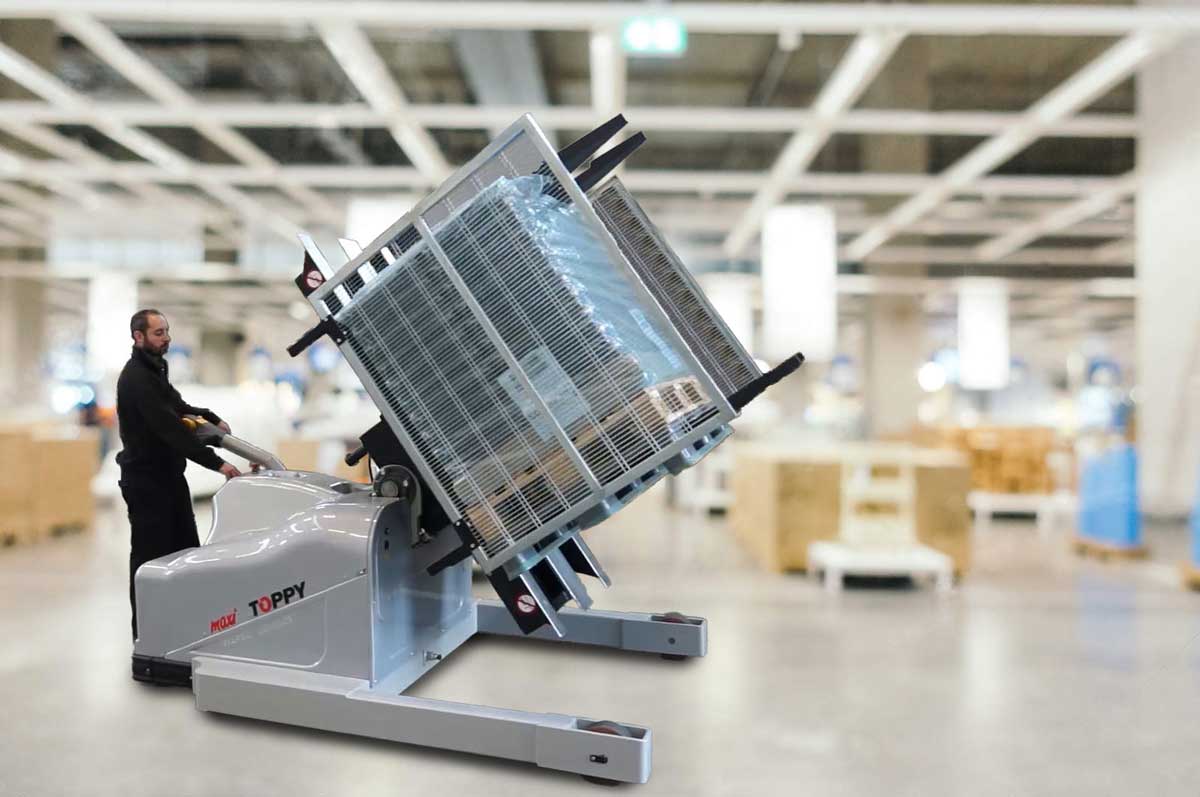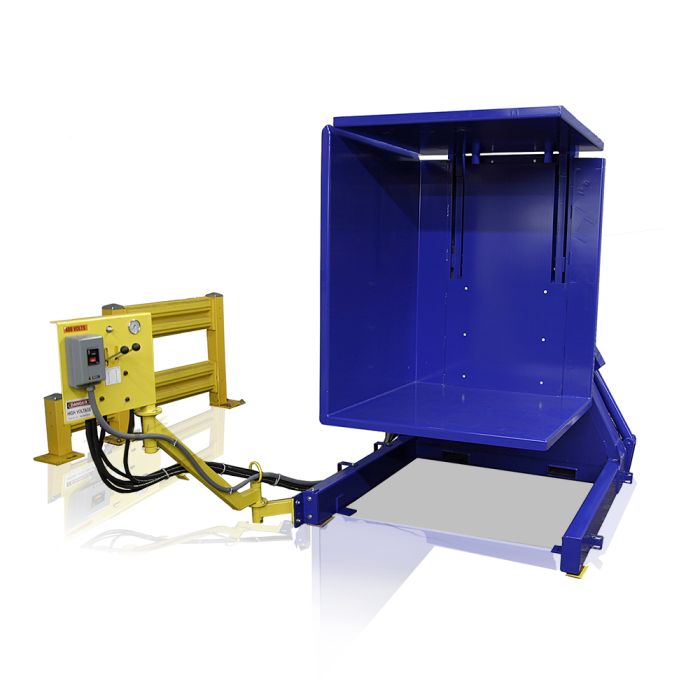# Pallet Inverters: Unlocking Rapid ROI and Boosting Warehouse Efficiency
Thinking about investing in a pallet inverter? Discover how quickly this equipment pays for itself through increased efficiency, reduced labor costs, and minimized product damage, making it a smart choice for your warehouse or factory. Pallet inverters represent a strategic investment for businesses aiming to streamline operations, reduce costs, and improve workplace safety. But how quickly can a pallet inverter actually pay for itself? The answer lies in a combination of enhanced efficiency, reduced labor expenses, minimized product and pallet damage, and optimized space utilization. This article delves into the compelling ROI of pallet inverters, exploring how this equipment can become a rapid and rewarding investment for a variety of industries.
The Compelling Case for Pallet Inverters: Efficiency and Cost Savings
In today’s fast-paced industrial landscape, efficiency and cost-effectiveness are paramount for success. Pallet inverters are emerging as a key solution for businesses striving to optimize their material handling processes. These robust machines are designed to lift, tilt, or completely invert pallet loads, offering a safer and more efficient alternative to manual pallet handling or forklift-only operations. The immediate benefits of integrating a pallet inverter into your workflow are multifaceted, impacting everything from labor costs to product integrity.

One of the primary drivers of ROI for pallet inverters is the significant reduction in labor costs. Traditional pallet transfer methods often require substantial manual labor, which is not only time-consuming but also prone to errors and injuries. Pallet inverters automate this process, drastically reducing the need for manual lifting, stacking, and restacking. This automation frees up valuable personnel to focus on more skilled tasks, enhancing overall productivity and job satisfaction within your workforce. In scenarios where frequent pallet changes are required, the time saved by a pallet inverter compared to manual handling is substantial, translating directly into lower wage expenses and improved operational speed.
Beyond labor savings, pallet inverters play a crucial role in minimizing product damage. Manual handling and even forklift operations, while common, carry inherent risks of damaging goods, especially when dealing with fragile or unstable loads. Forklifts, if not operated with extreme care, can easily cause impacts and shifts that lead to product breakage or packaging damage. Pallet inverters, on the other hand, offer a controlled and stable inversion process. By gently clamping and rotating the entire pallet load, they minimize stress on the goods, drastically reducing the chances of damage during pallet transfer or inversion. This reduction in damage is a direct cost saving, preserving product value and reducing waste due to unsaleable or compromised goods.
Furthermore, pallet inverters contribute to significant savings on pallet costs and management. Damaged pallets are a common and often overlooked expense in warehousing and manufacturing. Frequent forklift handling and constant movement can lead to pallet wear and tear, requiring regular repairs or replacements. Pallet inverters, by streamlining the handling process and reducing reliance on rough forklift maneuvers for pallet changeovers, contribute to extending the lifespan of pallets. Add
Calculating the exact payback period for a pallet inverter involves a straightforward ROI analysis, focusing on the key cost savings and efficiency gains. The initial investment in a pallet inverter, while seemingly significant, needs to be weighed against the long-term financial benefits it delivers. This analysis typically considers several factors: the initial cost of the inverter, the operational cost savings, and the increased revenue or prevented losses.
The initial investment cost for a pallet inverter varies depending on the type, capacity, and features of the machine. However, this upfront cost is a one-time expense, whereas the benefits accrue continuously over the equipment’s lifespan. Operational cost savings predominantly come from reduced labor expenses. To quantify this, businesses should calculate the labor hours currently spent on manual pallet handling that can be eliminated or reduced through automation. Multiply these saved labor hours by the average labor cost per hour to estimate the annual labor savings.
Then, factor in the reduction in product damage. Assess the current rate of product damage attributed to manual pallet handling or forklift accidents. Estimate the percentage reduction in damage achievable with a pallet inverter and calculate the corresponding monetary savings based on the value of goods typically damaged. Similarly, calculate savings from reduced pallet damage and replacement costs, considering the average pallet lifespan and replacement frequency before and after implementing a pallet inverter.
Increased efficiency translates to quicker turnaround times, potentially allowing for higher throughput and increased sales volume, though this benefit can be more challenging to directly quantify in ROI calculations. However, improved operational efficiency certainly contributes to overall business growth and profitability.

By summing up the annual savings from labor, product damage reduction, and pallet cost optimization, you arrive at the total annual benefit of the pallet inverter. To determine the payback period, divide the initial investment cost by the total annual benefits. The resulting figure represents the number of years (or potentially months) it will take for the accumulated savings to equal the initial investment, thus indicating how quickly the pallet inverter pays for itself.
Case studies consistently demonstrate impressive ROI for pallet inverters across various industries. For example, a food and beverage company replacing manual pallet rotation for product inspection could see a payback period of well under a year due to significant labor savings and reduced product spoilage. Similarly, a pharmaceutical manufacturer switching to sanitized pallets for hygiene compliance could quickly recoup their investment through minimized product contamination risks and streamlined pallet exchange processes. The precise payback speed will depend upon the specific operational context, scale of operations, and current inefficiencies being addressed, but the potential for rapid ROI is a consistent feature of pallet inverter implementations.
Maximizing Your Pallet Inverter ROI: Key Considerations
To maximize the ROI of a pallet inverter, businesses should carefully consider several factors when selecting and implementing this equipment. Choosing the right type and model of pallet inverter is crucial to ensure it aligns with specific operational needs and workload demands. Factors such as load weight and dimensions, the fragility of goods being handled, and the daily volume of pallet inversions all influence the optimal inverter selection.

For businesses handling a diverse range of load sizes and weights, a versatile pallet inverter with a wide clamp range is advisable. If dealing with particularly fragile products, models with adjustable clamp pressure settings are essential to prevent damage during inversion. High-volume operations, such as large distribution centers or manufacturing facilities, should opt for heavy-duty inverters designed for continuous and rapid operation to maximize throughput. Conversely, for smaller operations with lighter workloads, more economical, low-duty inverters may suffice.
Proper integration of the pallet inverter into the existing workflow is also key to maximizing its benefits. Consider the layout of your warehouse or production facility and choose an inverter model and placement that minimizes bottlenecks and optimizes material flow. For automated production lines, in-line pallet inverter systems can seamlessly integrate, further enhancing efficiency. For smaller facilities or specific process points, stand-alone or manually operated models might be more appropriate.
Regular maintenance is essential to ensure the longevity and consistent performance of your pallet inverter, thereby maximizing its ROI over the long term. Establish a routine maintenance schedule, following manufacturer recommendations, to prevent downtime and address any potential issues promptly. Proper operator training is equally important to ensure safe and efficient operation of the equipment, preventing misuse or accidents that could lead to damage or reduced efficiency.
By carefully considering these factors – selecting the right inverter, optimizing its integration, and ensuring proper maintenance and operation – businesses can fully unlock the potential ROI of pallet inverters and experience a rapid return on their investment.

![8 Critical Factors When Choosing a Wire Coil Wrapping Machine [2025 Buyer’s Guide] 8 Critical Factors When Choosing a Wire Coil Wrapping Machine [2025 Buyer’s Guide]](https://i0.wp.com/www.fhopepack.com/blog/wp-content/uploads/2023/01/Master-coil-stretch-wrapper-zt.webp?w=1024&resize=1024,1024&ssl=1)


